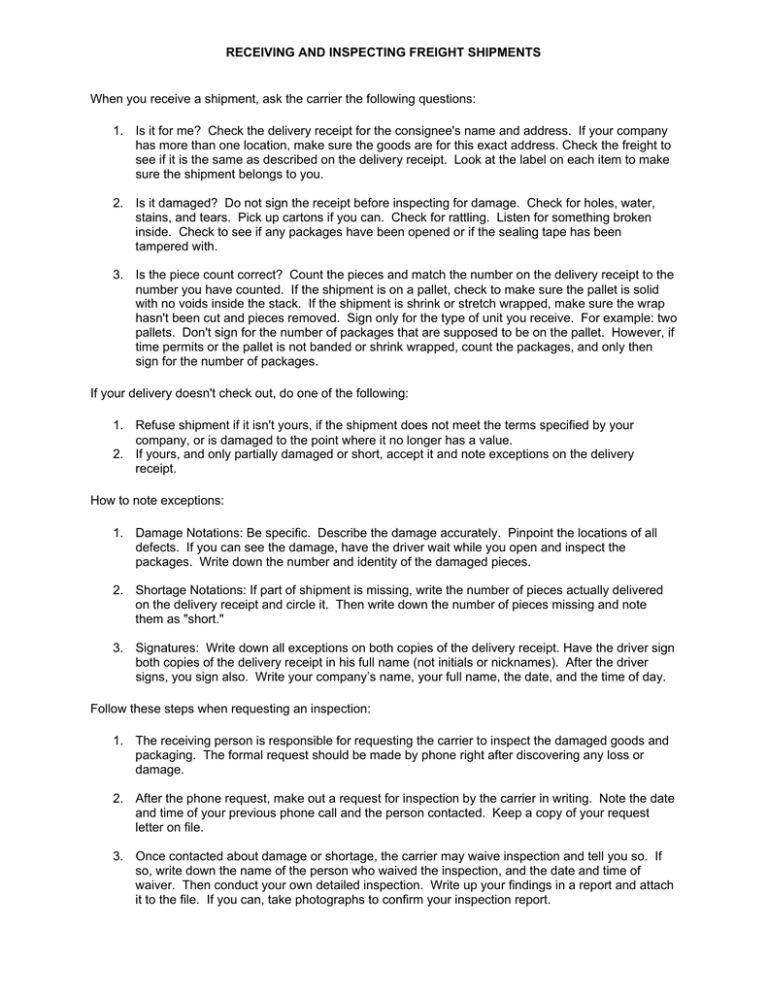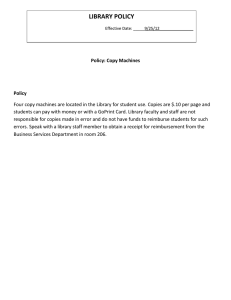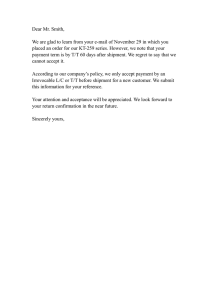RECEIVING AND INSPECTING FREIGHT SHIPMENTS
advertisement

RECEIVING AND INSPECTING FREIGHT SHIPMENTS When you receive a shipment, ask the carrier the following questions: 1. Is it for me? Check the delivery receipt for the consignee's name and address. If your company has more than one location, make sure the goods are for this exact address. Check the freight to see if it is the same as described on the delivery receipt. Look at the label on each item to make sure the shipment belongs to you. 2. Is it damaged? Do not sign the receipt before inspecting for damage. Check for holes, water, stains, and tears. Pick up cartons if you can. Check for rattling. Listen for something broken inside. Check to see if any packages have been opened or if the sealing tape has been tampered with. 3. Is the piece count correct? Count the pieces and match the number on the delivery receipt to the number you have counted. If the shipment is on a pallet, check to make sure the pallet is solid with no voids inside the stack. If the shipment is shrink or stretch wrapped, make sure the wrap hasn't been cut and pieces removed. Sign only for the type of unit you receive. For example: two pallets. Don't sign for the number of packages that are supposed to be on the pallet. However, if time permits or the pallet is not banded or shrink wrapped, count the packages, and only then sign for the number of packages. If your delivery doesn't check out, do one of the following: 1. Refuse shipment if it isn't yours, if the shipment does not meet the terms specified by your company, or is damaged to the point where it no longer has a value. 2. If yours, and only partially damaged or short, accept it and note exceptions on the delivery receipt. How to note exceptions: 1. Damage Notations: Be specific. Describe the damage accurately. Pinpoint the locations of all defects. If you can see the damage, have the driver wait while you open and inspect the packages. Write down the number and identity of the damaged pieces. 2. Shortage Notations: If part of shipment is missing, write the number of pieces actually delivered on the delivery receipt and circle it. Then write down the number of pieces missing and note them as "short." 3. Signatures: Write down all exceptions on both copies of the delivery receipt. Have the driver sign both copies of the delivery receipt in his full name (not initials or nicknames). After the driver signs, you sign also. Write your company’s name, your full name, the date, and the time of day. Follow these steps when requesting an inspection: 1. The receiving person is responsible for requesting the carrier to inspect the damaged goods and packaging. The formal request should be made by phone right after discovering any loss or damage. 2. After the phone request, make out a request for inspection by the carrier in writing. Note the date and time of your previous phone call and the person contacted. Keep a copy of your request letter on file. 3. Once contacted about damage or shortage, the carrier may waive inspection and tell you so. If so, write down the name of the person who waived the inspection, and the date and time of waiver. Then conduct your own detailed inspection. Write up your findings in a report and attach it to the file. If you can, take photographs to confirm your inspection report.

